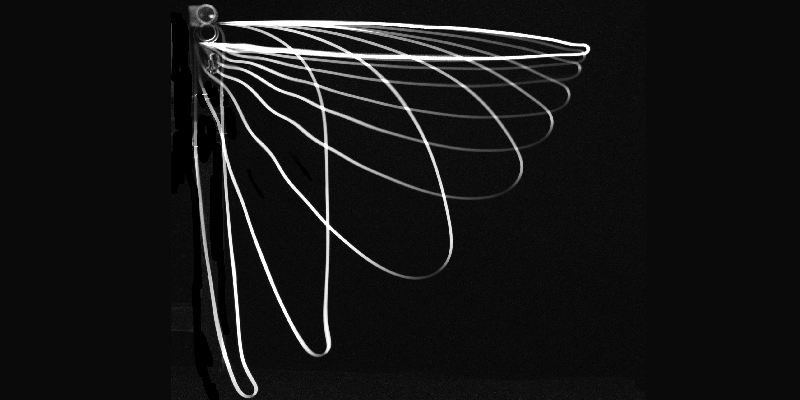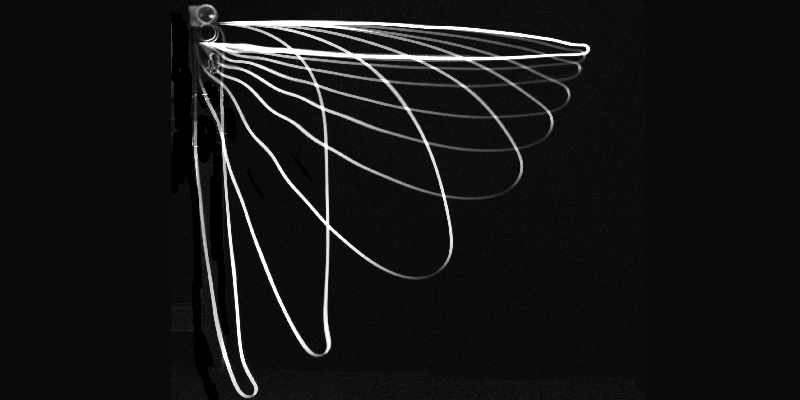Video—Spinning Loop of String Lifts Itself
Experiments with a loop of string pulled rapidly through rollers show that the free end lifts up, rather than hanging vertically, thanks to a boost from air friction. Nicolas Taberlet and his colleagues at the University of Lyon in France found that two main factors determine the motion—the weight of the material and the drag force on the loop as it moves through the air. The drag force allows the rotating loop to “push” against the air and rise upward. Experiments in a vacuum chamber proved the importance of the drag force—in the absence of air, a rotating string loop remains vertical.
With input from numerical simulations and analytical work, the team modeled the various shapes of the loop under a range of conditions. They also found that waves along the string propagate differently depending on the weight-to-drag ratio. The results may help advance efforts to understand a wide range of behaviors of strings and cables moving through air, such as industrial spinning of threads for textiles and towing of refueling equipment from military aircraft.
This research is published in Physical Review Letters.
–David Ehrenstein
David Ehrenstein is a Senior Editor for Physics Magazine.





